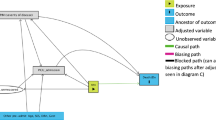Abstract
Gender inequalities in Sub-Saharan Africa are deemed relevant but data to support this view are scanty. Retrospective analysis of a large dataset of 105,025 patients admitted to an Ethiopian rural private, non-for-profit hospital over a 11 years period (2005–2015). Since 2001, the hospital and the local community are involved in a long-term, comprehensive and externally-supported health care intervention. The total number of admissions was higher for females (61.9% of the total) mainly because of the high frequency of admissions for obstetrics conditions. The total male-to-female ratio (M:F) was 0.6. Except for malaria, men had more admissions for the other leading causes, with the highest M:F being found for injuries (2.7) and musculoskeletal diseases (1.7). Overall, excluding admissions for pregnancy-related issues, the M:F was 1.4. The frequency of admissions changed with age and gender. Female admissions prevailed in the reproductive age period (from 15 to 44 years of age) while males admissions prevailed in the younger and older age groups. The case fatality rate was higher for men (M:F = 2.0). The total M:F and the M:F excluding pregnancy-related admissions did not change during the study period. Gender inequalities do exist in rural remote setting but tend to affect women differently during their lifespan. Even if gender inequalities generally favor males, the substantial proportion of admissions for pregnancy-related situations is encouraging.



Similar content being viewed by others
References
UN (2015). The Millennium Development Goals Report 2015. New York: United Nations.
Tangcharoensathien, V., Kanchanachitra, C., Thomas, R., Pfitzer, J. H., & Whitney, P. (2016). Addressing the health of vulnerable populations: A call for papers. Bulletin of the World Health Organization, 94, 235.
Tangcharoensathien, V., Mills, A., & Palu, T. (2015). Accelerating health equity: The key role of universal health coverage in the sustainable development goals. BMC Medicine, 13(4), 101.
Evans, D. B., Hsu, J., & Boerma, T. (2013). Universal health coverage and universal access. Bulletin of the World Health Organization, 91(8), 546–546A.
Diderichsen, F., Evans, T., & Whitehead, M. (2001). The social basis of disparities in health. In T. Evans, M. Whitehead, F. Diderichsen, A. Bhiya, M. Wirth (Eds.) Challenging inequities in health. From ethics to action (pp. 12–23). New York: Oxford University Press.
Gwatkin, D. R. (2001). Poverty and inequalities in health within developing countries: Filling the information gap. In D. Leon, G. Walt (Eds.) Poverty, inequality and health: An international perspective (pp. 217–246). Oxford: Oxford University Press.
Watkins, K. (2013). Leaving no-one behind: An equity agenda for the post-2015 goals. Shaping policy for development. London: The Overseas Development Institute.
Wizeman, T., & Pardue, M. (2001). Exploring the biological contributions to health: Does sex matter? Washington, DC: National Academy Press.
UNDP. (2015) Human Development Report 2015. Sustainability and equity: A better future for all. New York: United Nations Development Programme.
World Bank. 2015. Data. Ethiopia. Accessed April, 2016 from http://data.worldbank.org/country/ethiopia.
FMOH. (2014). Ethiopia’s fifth national health accounts 2010/11. Addis Ababa: Federal Ministry of Health.
CSA. (2014). Ethiopia mini demographic and health survey 2014. Addis Ababa: Central Statistic Authority.
CSA. (2012). Ethiopia demographic and health survey 2011. Addis Ababa: Central Statistic Authority and ICF International, Calverton.
Tsegaye, A., Somigliana, E., Alemayehu, T., et al. (2016). Ambulance referral for emergency obstetric care in remote settings. International Journal of Gynaecology and Obstetrics, 133(3), 316–319.
Accorsi, S., Kedir, N., Farese, P., et al. (2009). Poverty, inequality and health: The challenge of the double burden of disease in a non-profit hospital in rural Ethiopia. Transactions of the Royal Society of Tropical Medicine and Hygiene, 103(5), 461–468.
WHO. (1994). 1992–1994 International statistical classification of diseases and related health problems, Tenth revision. Geneva: World Health Organization.
Payne, S., & Doyal, L. (2009). Women, men and health. In R. Detels, R. Beaglehole, M. A. Lansang, M. Gulliford (Eds.) Oxford textbook of public health (5th edn., pp. 1419–1433). Oxford: Oxford University Press.
Morrow, R. H., Moss, W. J. Malaria (2009). In R. Detels, R. Beaglehole, M. A. Lansang, M. Gulliford (Eds.) Oxford textbook of public health (5th edn., pp. 1231–1248). Oxford: Oxford University Press.
Lawn, J. E., Cousens, S., Zupan, J., & Lancet Neonatal Surviving Steering Team (2005). 4 million neonatal deaths: When? where? why? Lancet, 365(9462), 891–900.
Victora, C. G., Wagstaff, A., Schellenberg, J. A., Gwatkin, D., Claeson, M., & Habicht, J. P. (2003). Applying an equity lens to child health and mortality: More of the same is not enough. Lancet, 362(9379), 233–241.
Connell, R., & Messerschmidt, J. W. (2005). Hegemonic masculinity: Rethinking the concept. Gender and Society, 19(12), 829–859.
Aragaw, A., Yigzaw, T., Tetemke, D., G, & Amlak, W. (2015). Cultural competence among maternal healthcare providers in Bahir Dar City Administration, Northwest Ethiopia: Cross sectional study. BMC Pregnancy and Childbirth, 15(9), 227.
Author information
Authors and Affiliations
Corresponding author
Ethics declarations
Conflict of interest
The authors declare that they have no conflict of interest.
Rights and permissions
About this article
Cite this article
Accorsi, S., Somigliana, E., Farese, P. et al. Gender Inequalities in Remote Settings: Analysis of 105,025 Medical Records of a Rural Hospital in Ethiopia (2005–2015). J Community Health 42, 806–812 (2017). https://doi.org/10.1007/s10900-017-0321-z
Published:
Issue Date:
DOI: https://doi.org/10.1007/s10900-017-0321-z




